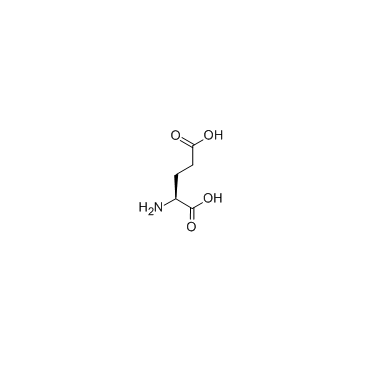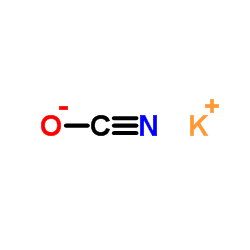1188-38-1
| Name | carglumic acid |
|---|---|
| Synonyms |
(S)-2-Ureidopentanedioic acid
(2S)-2-(carbamoylamino)pentanedioic acid N-Carbamyl-L-glutamic Acid MFCD00047874 |
| Description | Carglumic acid, a functional analogue of N-acetylglutamate (NAG) and a carbamoyl phosphate synthetase 1 (CPS1) activator, is used to treat acute and chronic hyperammonemia associated with NAG synthase (NAGS) deficiency. |
|---|---|
| Related Catalog | |
| Target |
CPS1[1] |
| In Vitro | Carglumic acid suppresses cell viability in the pancreatic ductal adenocarcinoma cell lines, triple-negative breast cancer cell lines, hepatoma cell lines, and human non-small cell lung carcinoma cell lines in a dose-dependent manner. The 50% inhibitory concentration (IC50) of Carglumic acid against those cell lines is between 5 and 7.5 mM. The results show that Carglumic acid does not induce complete cell cycle arrest. Instead, there are more sub-G1 cells among Carglumic acid-treated AsPC1 and MDA-MB-231 cells than among untreated cells. In AsPC1 and HPDE-E6E7 cells, the IC50s of Carglumic acid are 5 mM and over 10 mM, respectively . In MDA-MB-231 and MCF-12A cells, the IC50s of Carglumic acid are 5 mM and 6 mM, respectively[1]. |
| In Vivo | The results show that Carglumic acid, but not the vehicle control, markedly inhibits tumor growth. In the orthotopic pancreatic cancer model, tumor growth inhibition by Carglumic acid on day 21 is 80% (P<0.01). In the orthotopic triple-negative breast cancer model, tumor growth inhibition by Carglumic acid on day 20 is 82% (P<0.01). These results indicate that Carglumic acid suppresses tumor growth in pancreatic cancer and triple-negative breast cancer. On day 20, mean tumor growth inhibition in orally and intravenously treated mice is 55% and 93%, respectively, relative to untreated mice (P<0.01)[1]. |
| Kinase Assay | Caspase activity is measured by using a fluorimetric caspase-3 assay kit. In brief, cells that are treated with Carglumic Acid or that are left untreated are lysed in a lysis buffer, and 50 μg of protein lysate is incubated with Ac-DEVD-AMC substrate in the assay buffer for 1 h. The resultant fluorescence signals are read by using a fluorometer (excitation 360 nm, emission 460 nm), and the results are tabulated as fold changes relative to the untreated control cells[1]. |
| Cell Assay | Cell viability is evaluated by MTT (3-(4,5-dimethylthiazol-2-yl)-2,5-diphenyltetrazolium bromide) assay. In brief, various cancer cell lines are seeded (1×104 cells/well) in a 96-well plate and treated with different doses of Carglumic Acid. After 48 h, 50 μL of MTT solution per well (stock solution concentration 5 mg/mL) is added to each well, and the cells are incubated for 2 h more, followed by addition of 100 μL of dimethyl sulfoxide to each well. Absorbance at 570 nm is measured immediately using a multiwell scanner[1]. |
| Animal Admin | For orthotopic cancer models, AsPC1/luc human pancreatic cancer cells (1×106) are injected into the pancreas of nude mice or MDA-MB-231 human triple-negative breast cancer cells (3×106) are injected into the mammary fat pad of nude mice. Carglumic acid is administered to mice 5 days after tumor inoculation in the pancreatic cancer model and 7 days after tumor inoculation in the triple-negative breast cancer model. Tumor-bearing mice receive a Carglumic acid dose of 120 mg/kg orally every day for 10 days, 60 mg/kg orally three times per week for 2 weeks, or 60 mg/kg intravenously three times per week for 2 weeks. Tumor volume is determined by measuring luciferase signals using the in vivo imaging system in the pancreatic cancer model[1]. |
| References |
| Density | 1.499g/cm3 |
|---|---|
| Boiling Point | 438.1ºC at 760 mmHg |
| Melting Point | 174° |
| Molecular Formula | C6H10N2O5 |
| Molecular Weight | 190.15400 |
| Flash Point | 218.8ºC |
| Exact Mass | 190.05900 |
| PSA | 129.72000 |
| LogP | 0.06390 |
| Vapour Pressure | 6.7E-09mmHg at 25°C |
| Index of Refraction | 1.544 |
| Storage condition | 2-8°C |
CHEMICAL IDENTIFICATION
HEALTH HAZARD DATAACUTE TOXICITY DATA
|
| Symbol |

GHS07 |
|---|---|
| Signal Word | Warning |
| Hazard Statements | H302-H315-H319-H335 |
| Precautionary Statements | P261-P305 + P351 + P338 |
| Personal Protective Equipment | dust mask type N95 (US);Eyeshields;Gloves |
| Hazard Codes | Xi: Irritant; |
| Risk Phrases | R36/37/38 |
| Safety Phrases | 26-36/37 |
| RIDADR | NONH for all modes of transport |
| WGK Germany | 3 |
| RTECS | LZ9870000 |
|
~64% 
1188-38-1 |
| Literature: Verardo, Giancarlo; Geatti, Paola; Strazzolini, Paolo Synthetic Communications, 2007 , vol. 37, # 11 p. 1833 - 1844 |
|
~% 
1188-38-1 |
| Literature: Pharmaceutical Chemistry Journal, , vol. 12, # 5 p. 601 - 606 Khimiko-Farmatsevticheskii Zhurnal, , vol. 12, # 5 p. 53 - 59 |



